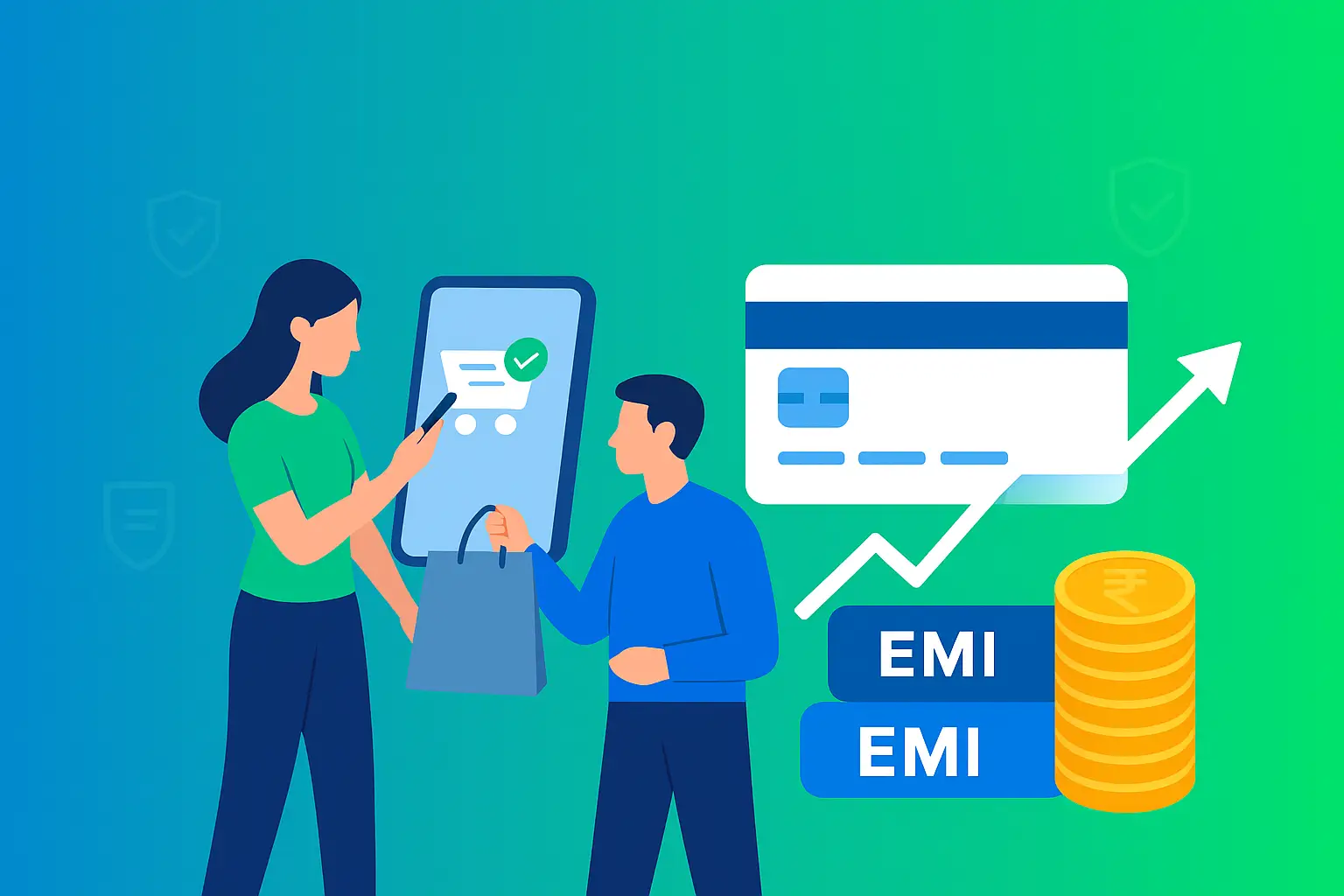Case Study: EMI vs Discounting — Which One Actually Increases Revenue?
In the competitive world of retail and eCommerce, every merchant faces the same dilemma: should I attract customers by offering discounts, or should I enable EMI plans? The choice isn’t just about sales—it’s about sustainable revenue growth. In this blog, we’ll unpack EMI vs Discounting for Revenue Growth, explore real-world use cases, and show how platforms like Secure EMI help merchants increase conversions without eating into margins.

The Problem with Discounts
Discounting has long been the default strategy for driving sales. From festive sales to flash deals, merchants slash prices hoping to win new customers. While effective in the short term, discounting often:
- Reduces profit margins drastically
- Conditions customers to wait for sales instead of buying at full price
- Erodes brand value over time
In fact, offering heavy discounts can result in a race to the bottom, where merchants compete on price rather than value. This may temporarily boost transactions but rarely leads to sustainable revenue growth.
Why EMI Works Better Than Discounting
On the other hand, EMI plans offer a smarter solution. Instead of lowering product prices, merchants allow customers to pay in smaller, manageable installments. This boosts affordability while preserving product value and merchant margins.
For example, a ₹20,000 mobile phone with a ₹2,000 discount leaves the merchant with ₹18,000 revenue. But if the same phone is sold at ₹20,000 with a 6-month EMI, the merchant collects the full price while making it easier for the customer to purchase. That’s a direct win-win.
Platforms like Secure EMI make this possible through UPI Autopay and NACH-based recurring payments, ensuring seamless collections without banks or credit cards.
Case Study: EMI vs Discounting for Revenue Growth
Let’s imagine two merchants selling high-ticket items such as electronics or home appliances:
- Merchant A (Discounting Strategy): Offers a flat 10% discount on a refrigerator priced at ₹30,000. Revenue per unit = ₹27,000.
- Merchant B (EMI Strategy): Offers the same refrigerator at ₹30,000, but with a 10-month EMI plan of ₹3,000/month. Revenue per unit = ₹30,000.
Outcome:
- Merchant A loses ₹3,000 per sale.
- Merchant B maintains margins, increases conversions by making products affordable, and builds long-term customer loyalty.
This clearly shows thatEMI not only preserves revenue but actively increases sales volumeby widening the customer base.
Offering EMI instead of discounts not only preserves your margins but also makes products more affordable for customers—leading to sustainable revenue growth.
Benefits of Choosing EMI Over Discounting
1. Higher Revenue Retention
Merchants no longer need to compromise margins to attract buyers.
2. Better Customer Affordability
Customers can buy high-value products without feeling the financial burden.
3. Brand Value Protection
EMI emphasizes product value rather than price-cutting.
4. Automated Collections
With Secure EMI, recurring payments are handled through UPI Autopay and NACH, reducing operational hassle.
5. Increased Conversions
Merchants report a 20–40% boost in sales when EMI is introduced as a payment option.
How Secure EMI Works
Secure EMI is built on NPCI’s trusted infrastructure, ensuring secure, compliant, and automated EMI management. Here’s how merchants can use it:
- Set Up EMI Plans: Merchants define the tenure and amount of installment plans.
- KYC & Customer Authorization: Customers complete quick KYC and authorize payments via UPI Autopay or NACH.
- Recurring Collections: EMIs are auto-deducted on due dates without manual intervention.
- Merchant Settlement: Funds are securely transferred, ensuring reliable cash flow.
This lifecycle ensures merchants don’t just offer EMI—they offer peace of mind and growth opportunities.
Real-World Applications
Secure EMI simplifies the process for both merchants and customers.
- Electronics Stores: Sell high-value mobiles, TVs, and appliances without losing margins.
- Furniture & Lifestyle Brands: Make premium furniture affordable while keeping prices intact.
- D2C Startups: Offer installment flexibility to compete with big brands, without falling into the discount trap.
FAQs on EMI vs Discounting for Revenue Growth
Q1. Does EMI really increase sales compared to discounts?
Yes. EMI expands affordability while maintaining product value, leading to higher conversions and revenue per unit.
Q2. Is EMI complicated for small businesses?
Not with Secure EMI. The platform simplifies setup, authorization, and collections using UPI Autopay and NACH.
Q3. Do I need a bank tie-up to offer EMI?
No. Secure EMI operates on a merchant-funded model, eliminating the need for traditional bank involvement.
Conclusion: The Smart Choice for Merchants
When it comes to EMI vs Discounting for Revenue Growth, the results are clear. Discounting may boost short-term sales but eats into margins. EMI, on the other hand, preserves product value, increases affordability, and boosts sustainable growth.
If you’re a merchant or SME looking to grow revenue without compromising profitability, Secure EMI is your partner in success.
👉 Contact Secure EMItoday to explore how you can set up EMI plans that work for your business.

Leave a Comment